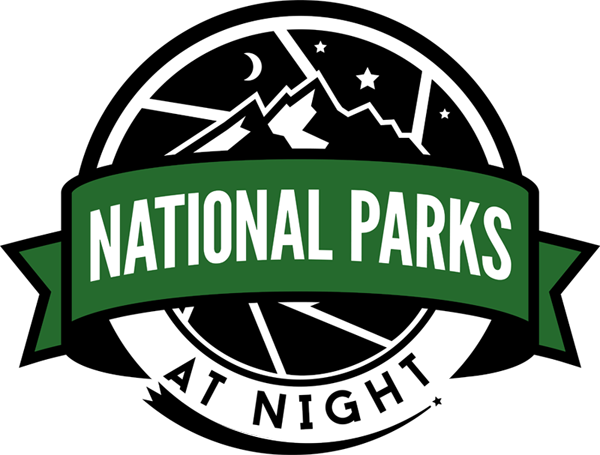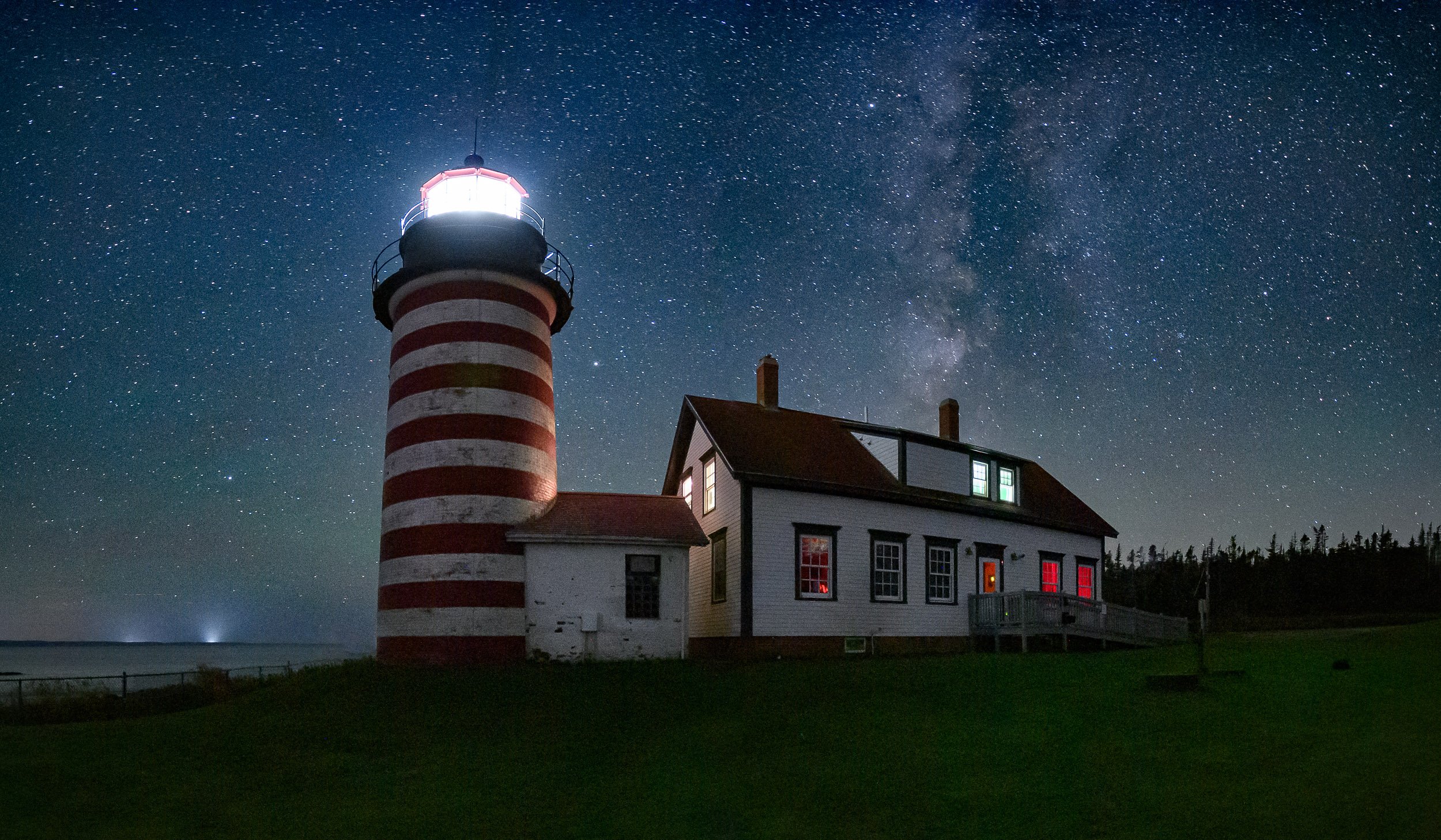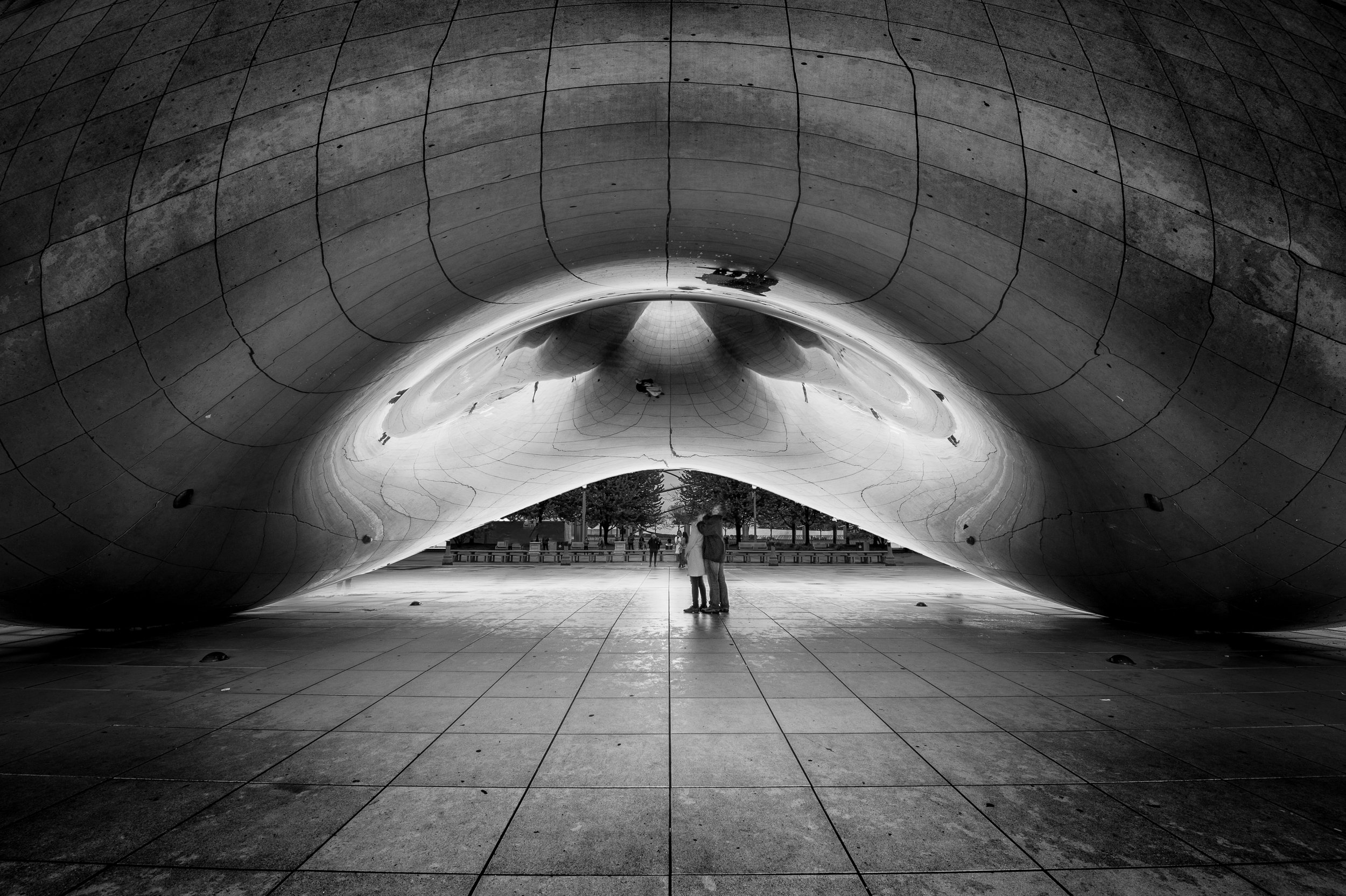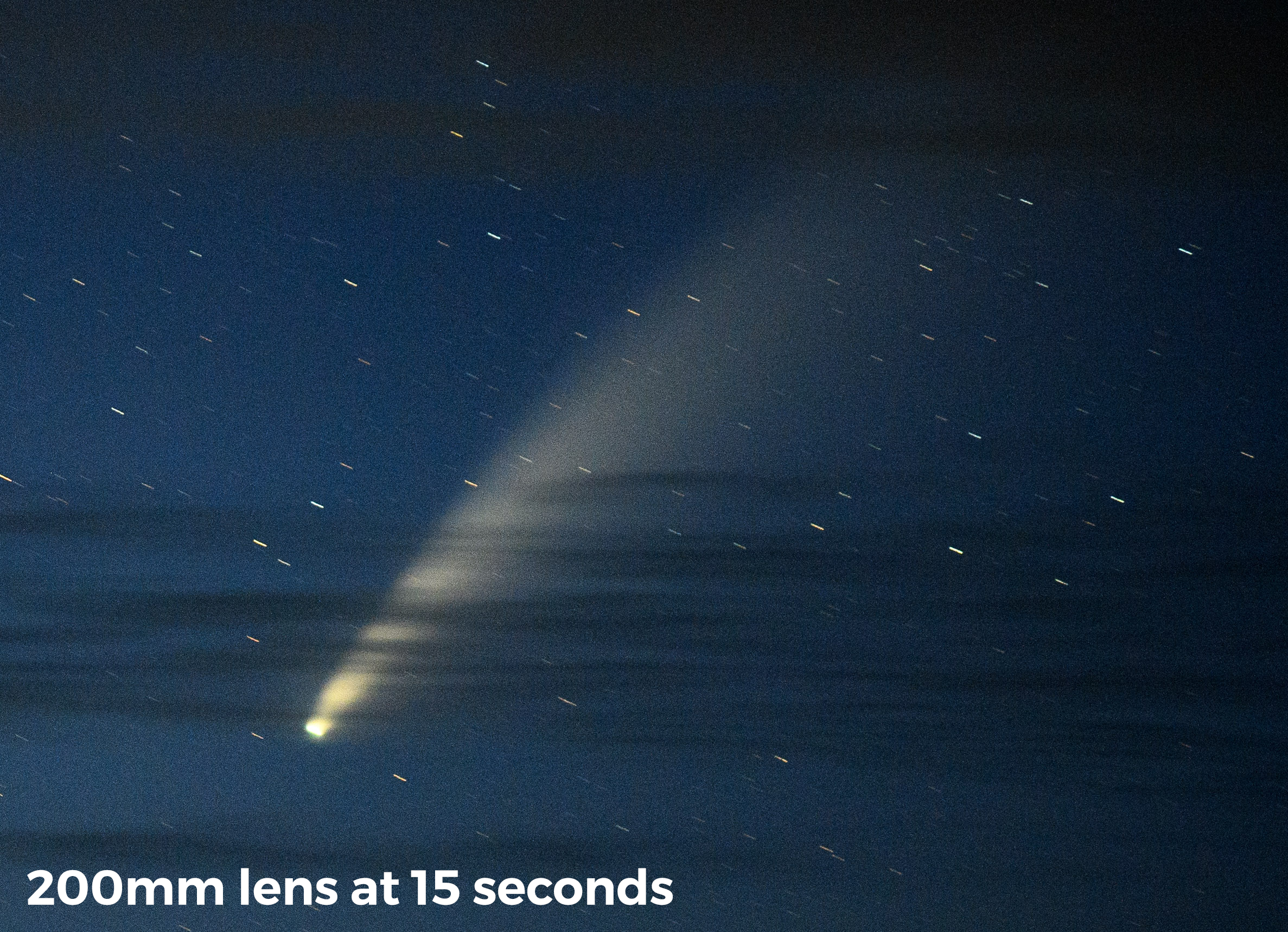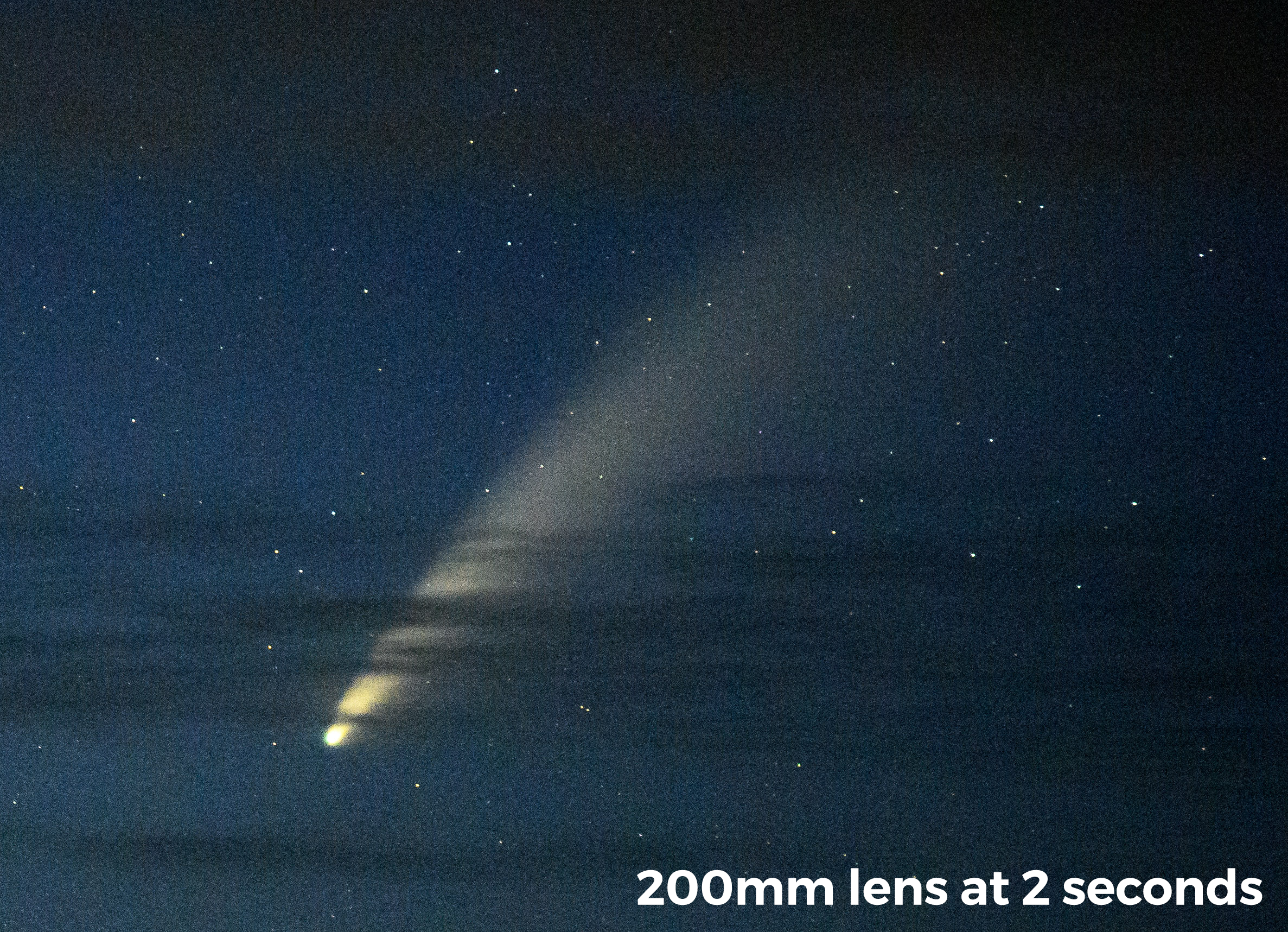Light painting in an urban environment can be quite a different experience if you are primarily accustomed to working in natural landscapes. For example:
Moonlit landscapes are probably the easiest situations for light painting. You can work with any combination of exposure variables. There’s no pressure to get the lighting done quickly, so there is usually plenty of time to develop and execute a plan to get the shot. The working conditions are relatively constant, and the ambient light is easy to deal with.
Light painting in astro-landscape conditions is often addressed with Low-level Landscape Lighting (LLL), which involves using a very dim continuous light source (or sources) in a fixed position. LLL eliminates the pressure of scrambling to fully light a scene in the short 15- to 30-second exposure time required to keep stars as points of light. Many light painting tools are too bright to effectively control when working with high ISOs, wide apertures and relatively short shutter speeds. Still, the approach is often straight-forward.
On the other hand, light painting in urban or artificially lit environments presents a couple of different challenges from light painting a natural landscape. The first is extreme scene dynamic range or contrast, and the second is the potential for wildly varying color temperatures of existing light sources. But both of those challenges also can be part of what makes urban night photography and light painting rewarding, as I will show in the following examples.
Figure 1. Plymouth Waterfront. To expose properly for this image, I had to use less exposure than I would have liked to avoid clipping the highlights in the background. This left the wall in the foreground severely underexposed, and thus ripe for light painting. Nikon D750 with a Nikon 24-120mm f/4 lens at 55mm, light painted with a Coast HP7R flashlight. 30 seconds, f/8, ISO 140.
In Figure 1, the Plymouth waterfront scene was illuminated primarily by high pressure sodium vapor lights, supplemented by a metal halide light on the building in the background. I had to underexpose the image to keep the background structure from blowing out, which left the wall of the foreground building in deep shadow. My strategy was to expose for the most important highlights and allow the rest of the exposure to fall into place.
It was a perfect opportunity to use light painting to fill in the underexposed shadows. I scraped the light from a Coast HP7R along the edge of the building, from out of the frame to camera left. This brought out the texture of the wall and the ivy.
The choice of a (more or less) daylight white-balanced LED flashlight contrasted with the very warm sodium light that illuminated the foreground, middleground and tree. The combination of both the angle and color of the added light provided depth and another layer of texture to the otherwise ordinary scene. Mundane subject matter can be made much more interesting with effective lighting.
Figure 2. Burial Hill Cemetery. Located in downtown Plymouth, Massachusetts, the cemetery is the final resting place of several Pilgrims and of the founders of the Plymouth colony. Canon 5D Mark II with a Nikkor 28mm PC f/3.5 lens. 4 minutes, f/8, ISO 400.
Figure 2 is an example of a scene where the overall illumination is a combination of mostly high pressure sodium vapor lights and moonlight. The cemetery sits on a hill above the town, and as a result receives mostly indirect light. The golden-orange glow on the trees indicates sodium vapor lighting, and the purplish sky gives away that moonlight was present. Without moonlight, the sky would likely have appeared black, or almost so due to the exposure difference between the dark sky and the brightly lit street scene.
The gravestones were subtly lit by the combination of the various ambient lights, some indirect, some direct (hence the shadows), but the sum total gives a warm white balance. I chose a cool, daylight-balanced flashlight and backlighting to create a more dramatic effect. Notice the greenish edges and rim lighting on the stones. If you look carefully, you might just spot a ghost or two, but they are probably not the ghosts of pilgrims. I’m reasonably sure that pilgrims did not wear jeans.
Figure 3. Winthrop, Massachusetts. From left: sodium vapor streetlight with LED flashlight and daylight white balance, simulated tungsten flashlight with tungsten white balance, LED flashlight with tungsten white balance. Canon 5D Mark II with a Canon 24-105mm f/4 lens at 55mm. 30 seconds, f/8, ISO 100.
When shooting in the mixed light of an urban environment, it’s important to consider the different appearances of the various light sources, as well as how your light painting will complement or contrast.
In Figure 3, the ambient lighting is again primarily very warm sodium vapor, and I did the light painting with a much cooler LED flashlight. On the left, the white balance is set to daylight, which matches the color of the light painting. On the right, the white balance is set to tungsten, which still gives a slightly warm appearance to the image, but the light-painted subject contrasts strongly with the background.
For the version in the center, the white balance is also set to tungsten, but I have simulated the look of a light painting source that is matched to the overall scene. I did this in Lightroom with a local adjustment and the new Hue slider to illustrate how using a light painting tool that has a similar color temperature to the ambient light compares to one with a contrasting white balance.
In those three examples, you can see how adjusting the white balance either to match the overall scene or to match the light painting can affect the look and feel of the image, as well as the relationship between objects lit with different light sources.
Figure 4. Providence, Rhode Island. I used a bright flashlight at a low angle to simulate the look of car headlights on the SUV. Mixed street lighting with LED flashlight. Canon 5D Mark II with a Nikkor 28mm PC f/3.5 lens. 10 seconds, f/8, ISO 200.
In Figure 4, the red light in the window and the three giant smokestacks are what drew me to this scene in Providence, Rhode Island. I didn’t want to include the SUV on the right side of the frame, but it wasn’t going anywhere so I had to make the best of it. My solution was to get behind the SUV and hit it with the brightest flashlight that I had to make it look like another car was approaching from behind. Yet again, the cooler color of the light painting contrasts with the warmer street lighting.
If you’ve seen my light-painted landscape photographs, then you may remember that I use a similar technique when photographing under natural light: I usually use a warm, yellowish incandescent light to contrast the cooler, blue natural light in the landscape. Same idea in Figure 4, but the colors are reversed.
Now that LED street lighting is becoming more dominant, and urban lighting is becoming more color-neutral, my urban light painting strategy is changing. These days, carrying a warm- and a cool-color temperature light to contrast or blend in with existing light isn’t always enough.
Fortunately there are a range of new light painting tools available these days with variable brightness and color adjustments. Any regular reader of our blog will be familiar with the Luxli Viola (which we use mostly for Low-level Landscape Lighting), but there are other useful tools, such as the similarly versatile Nanlite PavoTube 6C and the more directional ProtoMachine LED8.
Figure 5. Under the Zakim Bridge, Boston. I set the white balance to 2400 K to neutralize the color of the light on the concrete structures, so the daylight-balanced LED raked low across the labyrinth appears very blue. The color and quality of the light helped to juxtapose the soft spirals against the cold hard concrete forms of the highway in the background. Canon 5D Mark II with a Zuiko Shift 24mm f/3.5 lens. 2 minutes, f/8, ISO 100.
To me, the many different light sources that come from all directions and in lots of different colors is a big part of what makes photographing in urban environments exciting. Rather than trying to “correct” for the different colors of mixed lighting, I find it much more rewarding to work with the contrast and color.
Wrapping Up
A few other things to consider when working in artificially lit environments:
Let light be your subject. Allow yourself to be drawn in by light as much as (if not even more than) by the physical forms in your image.
Smaller, more intimate scenes often make for better photographs in the urban jungle. It’s easier to manage the extreme contrast of street lighting in a smaller, contained space.
Look for scenes with different light sources falling on distinct surfaces. Mixed lighting can be your friend.
In general, avoid including light sources in your photos. Rules are meant to be broken, but hiding a light behind a sign or a tree, or even around a corner, is an effective way to cut down on contrast and to reduce the chance of flare in your image. But be careful of lights just outside the frame—these are the ones that really cause flare.
Understand that you will need to add a lot more light to an urban scene than you may be accustomed to when working by starlight or moonlight. Because urban scenes are brighter, we usually work at native ISO for the best image quality in dynamic environments—and that means you need to add more light than you would at lower ISOs.
Just as in nature, add light to fill in dark shadows, or to add emphasis to an important part of your scene.
Stay alert. Keep an eye on your gear, be aware of people around you, and watch out for traffic that may not be aware of you or your camera’s presence.
Night photography and light painting by artificial light in the built environment is a lot of fun, and it harks back to the earliest days of night photography when the available materials were not sensitive enough to record an image by starlight or moonlight. Urban night photography presents different challenges than photographing a landscape at night, and with the right mindset adjustment, it can be equally rewarding.
As always we’d love to see any images inspired by our blog posts, so tag us on Instagram (@nationalparksatnight), or post in the comments or to our Facebook page.
